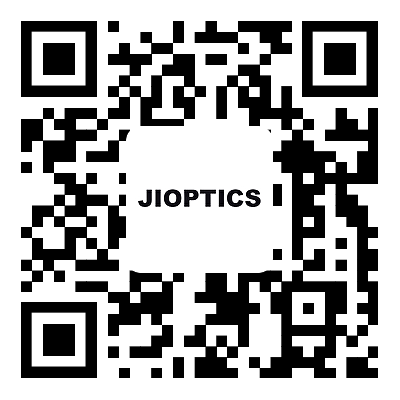The Generation and Correction of the Error of Infrared Range Finder
2023-02-24
1、 Types of range finder errors
The infrared range finder has the advantages of high automation, fast ranging speed and high accuracy. However, if the instrument is improperly used or poorly maintained, the performance of the early instrument may change, resulting in a reduction in accuracy. The aging of electronic components is also an important reason for the decrease of instrument accuracy and the change of instrument additive constant. In order to master the performance indicators of each instrument, use the instrument reasonably, and measure high-quality data, it is necessary to conduct a comprehensive inspection of the instrument on a regular basis.
There are many kinds of ranging errors, such as aiming error, amplitude and phase error, centering error, periodic error, error caused by signal to noise ratio, and so on. There are both accidental errors and systematic errors. Although the aiming error is accidental, it also has certain regularity. A good survey worker should master the performance of the instrument he has, so that he can use the instrument to observe within the minimum error area of the instrument.
2、 Generation of aiming error of rangefinder
Aiming error refers to the ranging error caused by the inconsistent ranging results when measuring at different positions of the beam emitted by the range finder, that is, the nonuniformity of the spatial phase of the light emitting tube or modulator, which is mainly caused by the nonuniformity of the beam phase emitted by the GaAs light emitting diode. The beam emitted by gallium arsenide is ideally in the same phase with the light emitting tube on the same distance surface within the beam range. Similarly, the distance measured at any position of the beam is the same, but in fact, it is not the same. The phase of each point on the surface with the same distance from the light emitting tube is not the same, and the same phase is an irregular surface, which results in different results when the beam is measured at different positions. The difference between the two is the aiming error caused by the uneven phase.
3、 Calibration of distance measuring instrument
It can be seen from the iso-phase curve and iso-intensity curve that the aiming error distribution is relatively uniform, but in order to better improve the observation accuracy, when aiming at the prism, it is necessary to aim at the part with the smallest error - the best area. In order to reduce the aiming error, on the one hand, it is necessary to improve the manufacturing process of the modulator or light emitting tube and improve its spatial phase uniformity, but this method has a great impact on the measurement of the instrument, and it can not complete the elimination of the effect of phase non-uniformity. Considering that the cause of the reliable deflection of the telescope is caused by the collimation error of the telescope and the non-parallel of the optical axis of the launch and reception and the collimation axis of the telescope, the former is accidental and the latter is systematic. Therefore, when using the instrument, the parallelism of the three axes should be checked and corrected frequently to find the best observation area so as to improve the observation accuracy.s
The infrared range finder has the advantages of high automation, fast ranging speed and high accuracy. However, if the instrument is improperly used or poorly maintained, the performance of the early instrument may change, resulting in a reduction in accuracy. The aging of electronic components is also an important reason for the decrease of instrument accuracy and the change of instrument additive constant. In order to master the performance indicators of each instrument, use the instrument reasonably, and measure high-quality data, it is necessary to conduct a comprehensive inspection of the instrument on a regular basis.
There are many kinds of ranging errors, such as aiming error, amplitude and phase error, centering error, periodic error, error caused by signal to noise ratio, and so on. There are both accidental errors and systematic errors. Although the aiming error is accidental, it also has certain regularity. A good survey worker should master the performance of the instrument he has, so that he can use the instrument to observe within the minimum error area of the instrument.
2、 Generation of aiming error of rangefinder
Aiming error refers to the ranging error caused by the inconsistent ranging results when measuring at different positions of the beam emitted by the range finder, that is, the nonuniformity of the spatial phase of the light emitting tube or modulator, which is mainly caused by the nonuniformity of the beam phase emitted by the GaAs light emitting diode. The beam emitted by gallium arsenide is ideally in the same phase with the light emitting tube on the same distance surface within the beam range. Similarly, the distance measured at any position of the beam is the same, but in fact, it is not the same. The phase of each point on the surface with the same distance from the light emitting tube is not the same, and the same phase is an irregular surface, which results in different results when the beam is measured at different positions. The difference between the two is the aiming error caused by the uneven phase.
3、 Calibration of distance measuring instrument
It can be seen from the iso-phase curve and iso-intensity curve that the aiming error distribution is relatively uniform, but in order to better improve the observation accuracy, when aiming at the prism, it is necessary to aim at the part with the smallest error - the best area. In order to reduce the aiming error, on the one hand, it is necessary to improve the manufacturing process of the modulator or light emitting tube and improve its spatial phase uniformity, but this method has a great impact on the measurement of the instrument, and it can not complete the elimination of the effect of phase non-uniformity. Considering that the cause of the reliable deflection of the telescope is caused by the collimation error of the telescope and the non-parallel of the optical axis of the launch and reception and the collimation axis of the telescope, the former is accidental and the latter is systematic. Therefore, when using the instrument, the parallelism of the three axes should be checked and corrected frequently to find the best observation area so as to improve the observation accuracy.s



